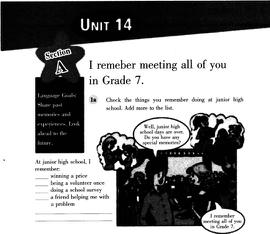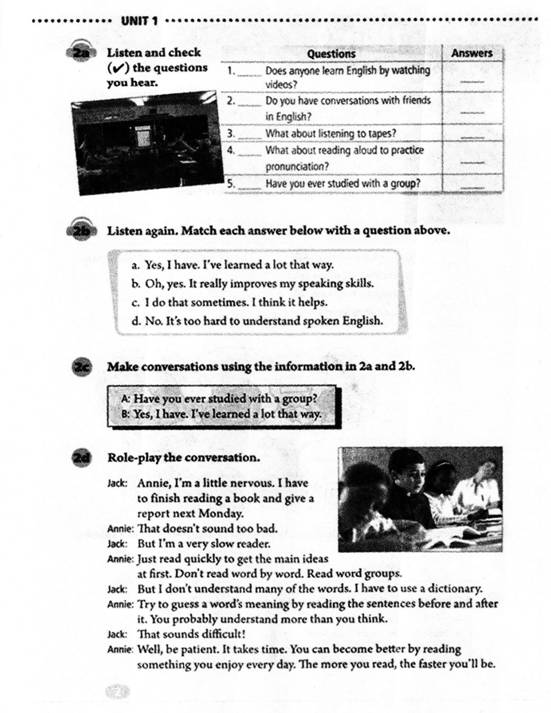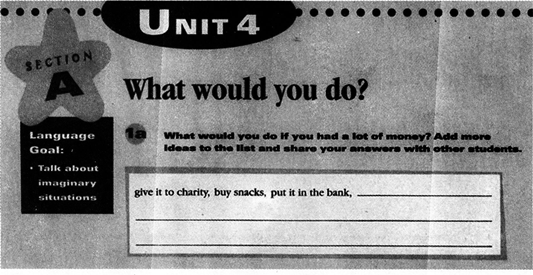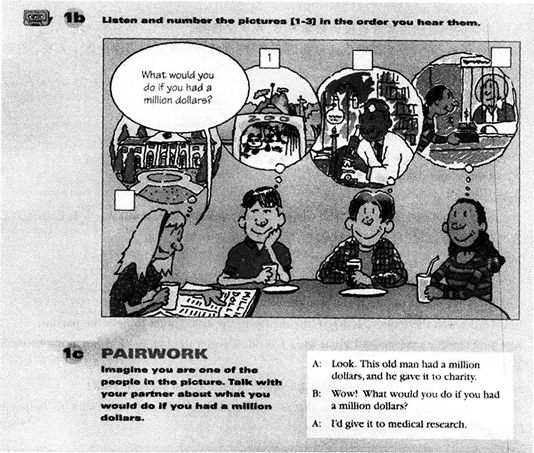Class Type: Reading class, 1 period
Teaching Contents: This lesson is an introduction about Charlie Chaplin who is a master of nonverbal humour.
Teaching Objectives:
(1) Knowledge objective
Students can listen, read, and then imitate the jokes.
(2) Ability objectives
①Students can develop their reading ability.
② Students can talk about some types of English humour and Chinese humour and then find their differences.
(3) Emotional objective
Students can realize that humour is to let people be optimistic about everything around.
Teaching Key Points:
How to understand and enjoy English humors.
Teaching Difficult Points:
How to understand the differences between English and Chinese in humours.
Teaching Methods:
Using pictures, discussion, reading and imitation
Teaching Aids:
A recorder, a projector and some pictures
Teaching Procedures:
Step 1 Warming up (5 minutes)
Warm up by defining "Humour".
T: What is"Humour" Does anyone of you know anything about Humour Look at the screen and read the definition of Humour from the Internet.
Whose job
This is the story about four people named Everybody, Somebody, Anybody and Nobody. There was an important job to be done, and Everybody was sure that Somebody would do it. Anybody could have done it, but Nobody did it.
Somebody got angry about that because it was Everybody's job. Everybody thought Anybody could do it, but Nobody realized that Everybody wouldn't do it. It ended up that Everybody blamed Somebody When Nobody did what Anybody could have done.
(Justification: Stimulate students' curiosity about English humour and get students involved in talking about this topic.)
Step 2 Pre-reading (10 minutes)
Telling the truth--what do you like to laugh at
Sh I like to laugh at cartoons, for they're lovely and fun.
S2: I like to laugh at fairy tales. They are amusing and interesting.
T: Many years ago there lived an Emperor who was so exceedingly fond of fine new clothes that he spent vast sums of money on dress. To him clothes meant more than anything else in the world. He took no interest in his army,nor did he care to go to the theatre, or to drive about in his state coach, unless it was to display his new clothes. He had different robes for every single hour of the day.
(Justification: Through"Telling the truth--what do you like to laugh at " to stimulate students' curiosity about English humour and prepare them for the reading part.)
Step 3 While-reading (15 minutes)
(1) Reading aloud to the recording
T: Now please listen and read aloud to the recording of the text. Pay attention to the pronunciation of each word
and the pauses twice and you shall read aloud twice, too. I will play the Nonverbal Humour.
(2) Reading and underlining
T: Next you are to read and underline all the useful expressions or collocations in the passage. Copy them to your notebook after class as homework.
(3) Reading to identify the topic sentence of each paragraph
T: Skimming the text and identify the topic sentence of each paragraph. You may find it either at the beginning,the middle or the end of the paragraph.
(4) Reading and transferring information
Read the text again to complete the table.

(5) Reading and understanding difficult sentences
T: As you have read the text several times, you can surely tell which sentences are difficult to understand.
Now put your questions concerning the difficult points to the teacher.
(Justification: Students' reading ability of getting the general ideas and locating the specific information can be trained and improved by skimming and scanning practice.)
Step 4 Post-reading (10 minutes)
The teacher asks students to discuss the most humourous story happened in their live in group. After the discussion the teacher asks them to recommend the most humourous story in each group, and let one student share the story with the whole class.
(Justification: Help the students have a better understanding of the topic of humor.)
Step 5 Summary and Homework (5 minutes)
Summary: To end the lesson by watching a silent humourous movie called"Making a Living" by Charlie Chaplin.
Homework: Do the comprehending exercises in the workbook.
(Justification: Summary and homework is of importance for students to master the knowledge they have learned in class.)
Blackboard Design:
A Master of Nonverbal Humour
What is nonverbal humour
Who is Charlie Chaplin
How does he make a sad situation entertainment
What is the story of The Gold Rush
Facts about Oscar
A brief life history of Charlie Chanlin
Teaching Reflection.
















